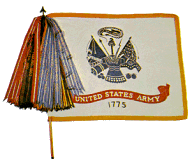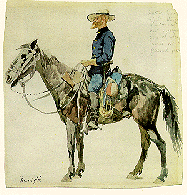Scout Reconnaissance
"In war there is no substitute for victory."
General Douglas MacArthur
![]()
"The object of war is not to die for your country but to make the other bastard die for his."
George Patton
![]()
"Recon Scout" usually refers to a Cavalry Scout that may be Airborne, Air Assault, or HMMWV based and conducts dismounted operations regularly. They take great pride in their ability to move amongst the enemy, through all types of terrain, all the while carrying gear that often exceeds 100 pounds. The Cavalry Scout is such an invaluable asset on the battlefield that he rarely fights as a combat multiplier. More likely, a Cavalry Scout will coordinate both direct and indirect fires to decisively engage and destroy the enemy. The term "recon out front" exemplifies the danger of the job. The amount of common and specialized skills that they possess outnumbers any other soldier on the battlefield. To be a Cavalry Scout is to be the commander's eyes and ears on the battlefield. To do this requires a resourceful and courageous soldier. He must crave the challenge of scouting and face the continuous threat of exposure to the enemy.


The Cavalry collar insignia of two crossed sabers in scabbards, cutting edge up, was adopted in 1851. Officers and enlisted personnel assigned to cavalry regiments, squadrons, or separate troops are authorized to wear the insignia in lieu of their branch insignia when approved by the MACOM commander. The branch plaque has the Cavalry insignia and a rim of gold with a white background and scarlet letters. The background of all regimental cavalry flags is yellow while the troop guidons display flags of red and white without an insignia.